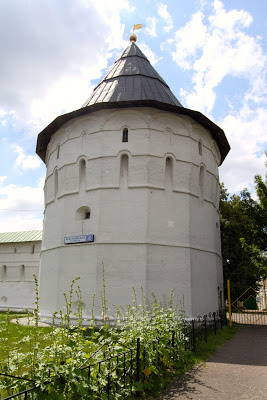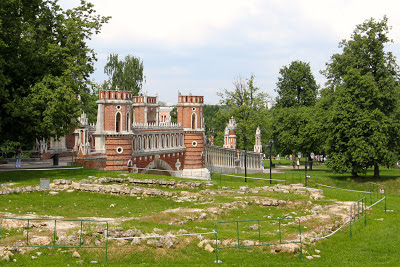Krutitsy Patriarchal Metochion is an operating ecclesiastical estate of Russian Orthodox Church. Krutitsy Metochion, established in late 13th century, contains listed historical buildings erected in late 17th century on site of earlier 16th century foundations. After a brief period of prosperity in 17th century, Krutitsy was shut down by imperial authorities in 1780s, and served as a military warehouse for nearly two centuries. It was restored by Petr Baranovsky and gradually opened to the public after World War II; in 1991-1996, Krutitsy was returned to the Church and re-established as the personal metochion of Patriarch of Moscow and all Russia.
Wednesday, 26 June 2013
Monday, 24 June 2013
Moscow International House of Music
The MMDM - Moscow International House of Music - is the biggest music centre in Russia and was built in 2002. It is centrally located on the Moscow River Bank, next to Swisshotel Krasnye Holmy Hotel, just off the Garden Ring .
The complex of the Moscow International Music House includes three concert halls. They are set on different levels and have their own entrances. The Svetlanov hall is the largest and can accommodate up to 1699 people, the Chamber hall includes 573 seats and its excellent acoustic properties enables it to hold both recitals and symphonic concerts and finally the Theatre hall with 530 seats. This unique multifunctional hall hosts performances, concerts, ballets, fashion shows and public events.
Tuesday, 11 June 2013
Friday, 7 June 2013
Residential Complex Bolshaya Tulskaya
The building which is about 400 meters long, 50 meters high with nine storeys, took almost two decades to complete. Because of its size and notoriety it has many nicknames. Muscovites endearingly call it the House-Boat, the Titanic, the House of the Nuclear Scientists, the House of Bachelors, the House of the Tula (after the street) or even the Recumbent Skyscraper. Officially it is the Big Tula Street Building #2. The people also nicknamed it the "Big House" or "Long House" because of its 50-meter height and half a kilometre in length.
The building has nine entrances and nearly 1,000 apartments. Bachelors were given one-bedroom apartments ("House of Bachelors"). Several materials were used for construction; stone, concrete slabs and beams as well as brickwork.
Wednesday, 5 June 2013
Sunday, 2 June 2013
Tsaritsyno
Tsaritsyno is an estate in the southern part of Moscow around the Tsaritsyno ponds. Covering 550 hectares, it is Moscow's largest reserve and a national monument. It was built in pseudo-Gothic style by architects Vasily Bazhenov and Matvei Kazakov and the park includes pavilions, gazeboes, grottoes and bridges.
An 8km cascade of ponds around the area was built during the time of Boris Godunov. The village belonged to the noble family of the Streshnevs, princes Golitsyn. In 1713, Peter I gave the village to Prince Dmitry Kantemir of Moldavia. In 1775, Catherine II bought the estate to build a retreat, which is why it's called Tsaritsyno (literally, "the Tsarina’s").
The Empress gave the commission to Russian architect Vasily Bazhenov, who designed the palace in a "Moorish-Gothic" style. The parks were laid out by English garden designers, I. Murno and F. Reed.
However, Catherine was not happy with the result and In 1785, when construction was nearly finished, she ordered Bazhenov’s buildings to be demolished. She commissioned another architect, Matvei Kazakov, to build a new palace.
When Catherine II died in 1796, work had been going on for 10 years, but there was no further building for another two centuries. The estate went through various uses and finally became a Moscow district. In 1984, restoration of the buildings and landscape parks were launched to establish a State Museum of Decorative and Applied Arts of the Peoples of the USSR. The palace was finally completed in 2005, and opened to the public in September 2007.
Subscribe to:
Comments (Atom)








































